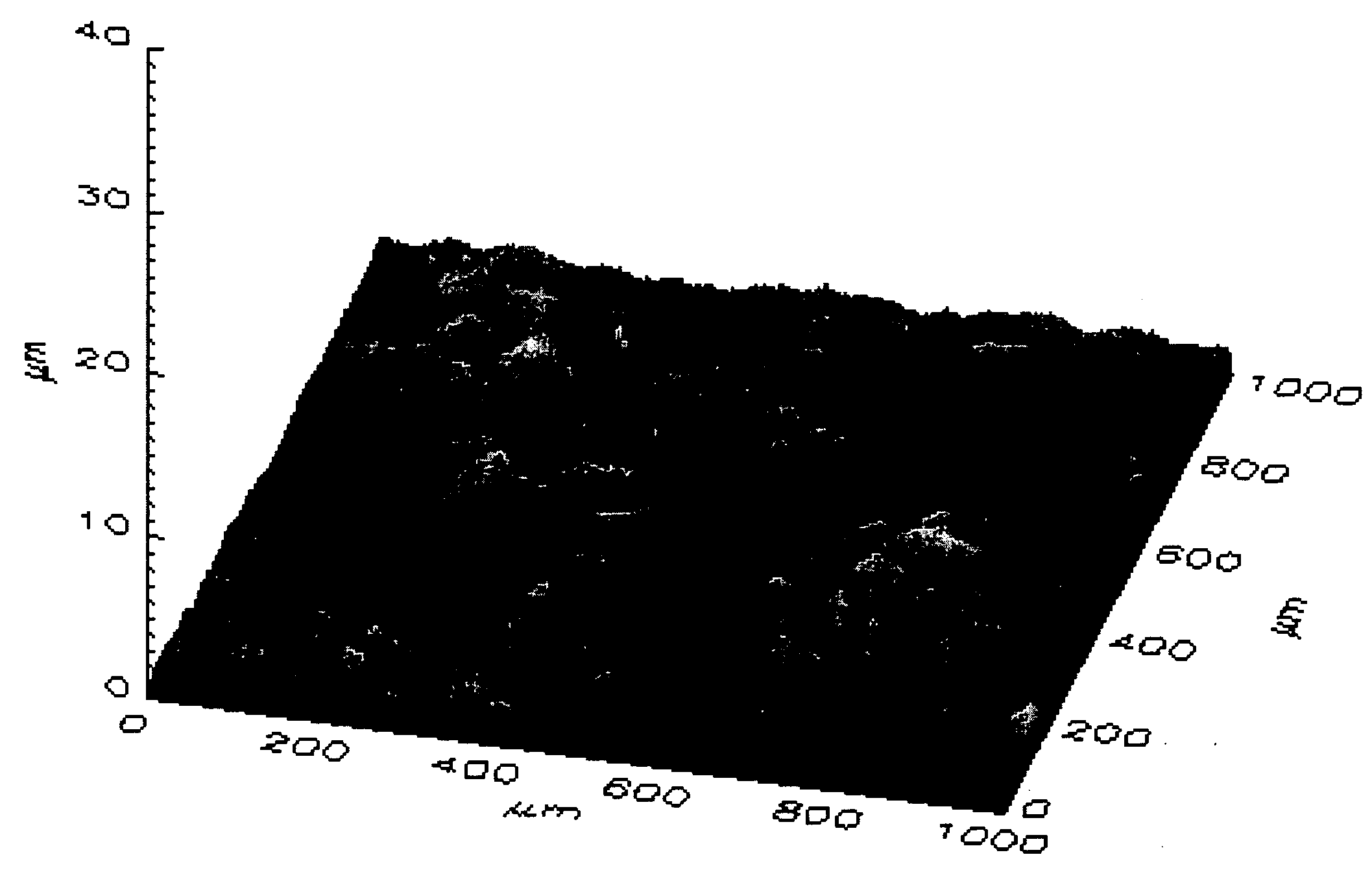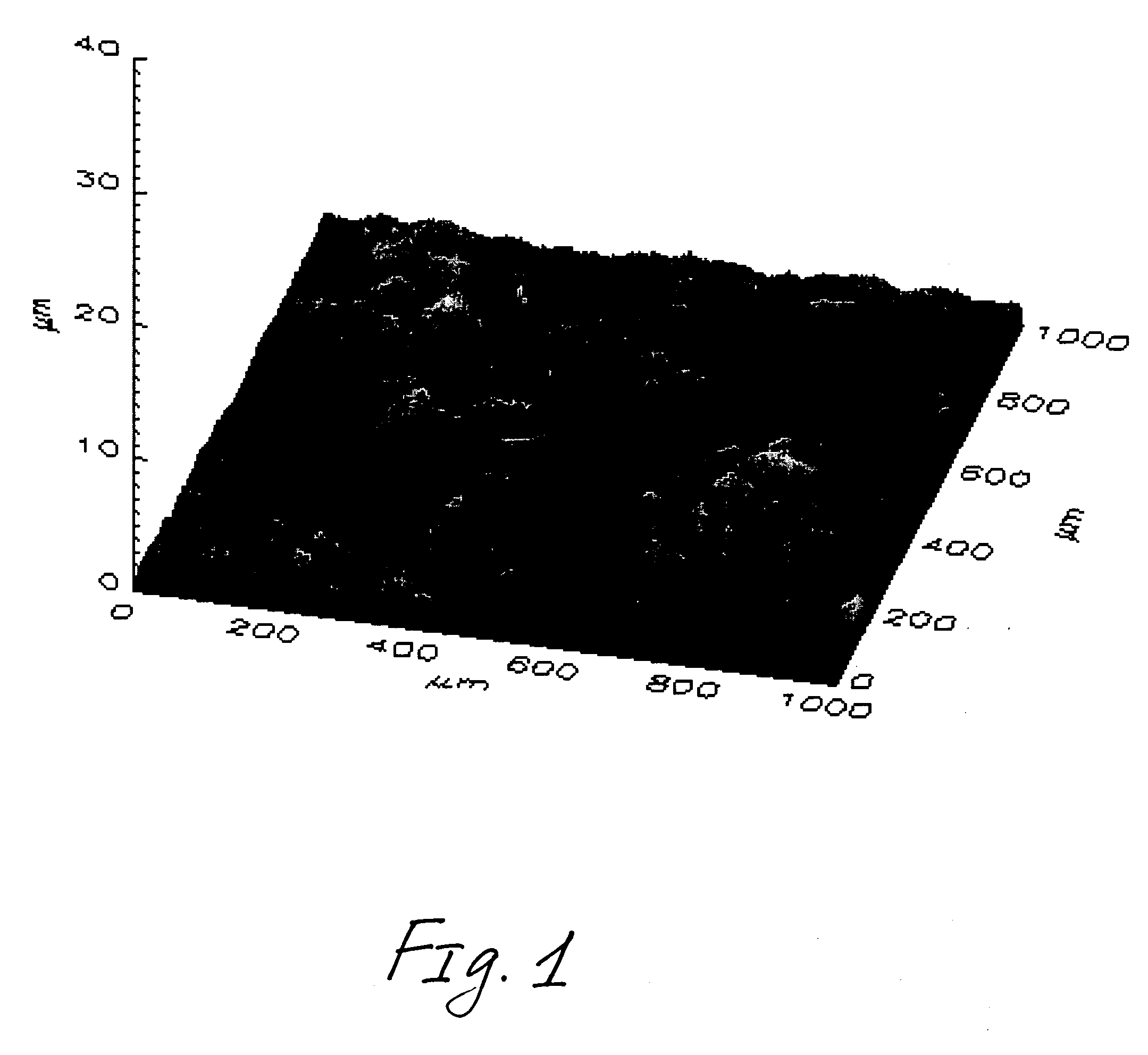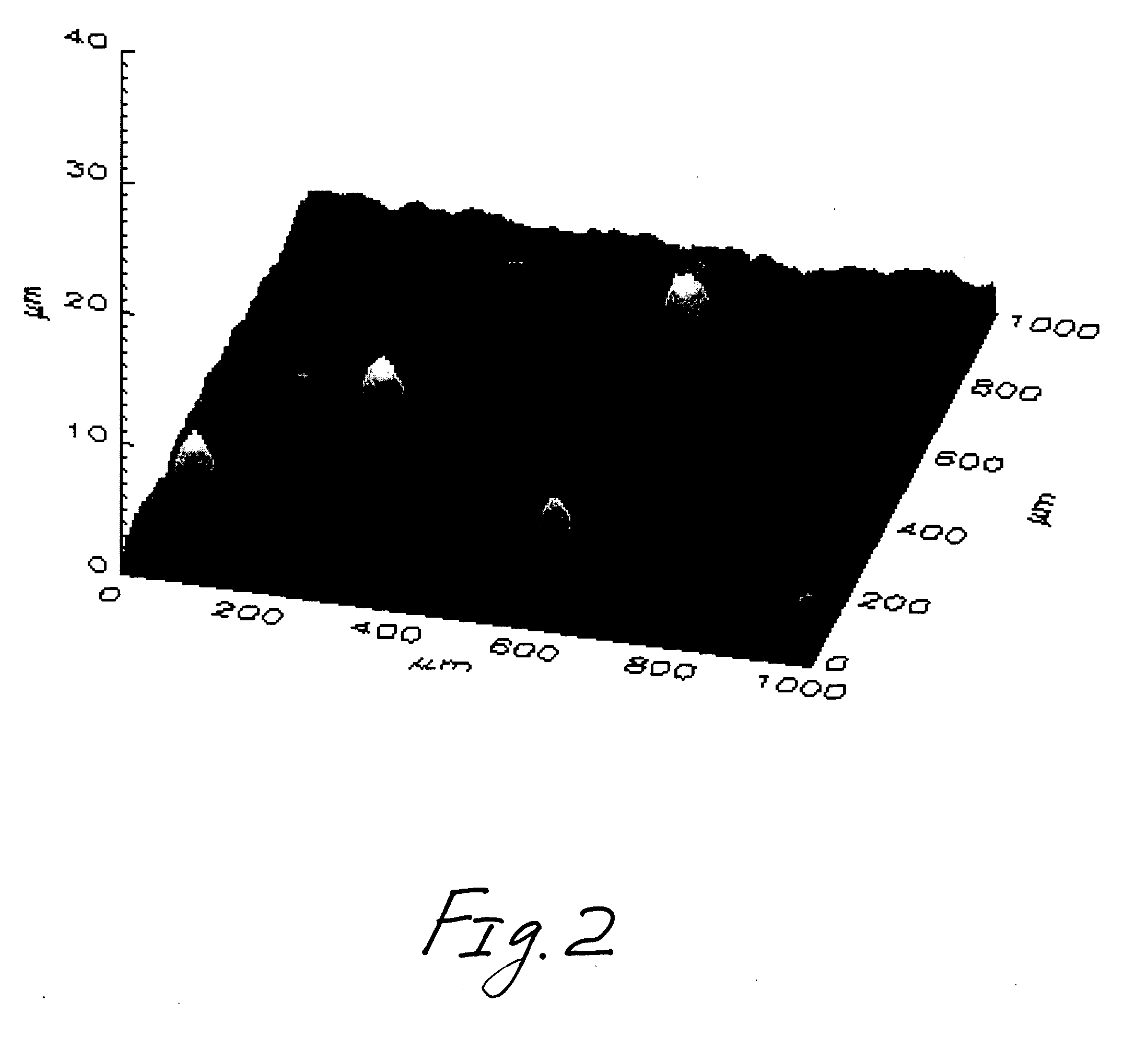Glass ceramic panel with a pleasing black decoration applied with a decorative paint
a technology of decorative paint and glass ceramic, applied in the field of glass ceramic panels or cook tops, can solve the problems of not being able to produce deep black colors with zinc-containing glass fluxes, difficult to manufacture decorative paints, and affecting the appearance of the dish, so as to achieve smoother or less rough surfaces and deep black colors.
- Summary
- Abstract
- Description
- Claims
- Application Information
AI Technical Summary
Benefits of technology
Problems solved by technology
Method used
Image
Examples
first embodiment
[0031]The deep black color impression is already obtained according to the invention with a decorative paint having a glass flux content of 100 percent, e.g. with an unpigmented transparent melting glass flux according to the above-described DE 197 21 737 C1 (GF1).
[0032]The quantitative results of measurements of the color impression of the decorative coatings according to this first embodiment of the decorative paints (GF1), which comprises a 100% glass flux, in comparison to other glass fluxes (GF2 according to DE 198 34 801 C2 and GF 3 according to EP 0 460 863 B1), which can be used in decorative paints for the glass ceramic cooking surface because of their low thermal expansion coefficient, are given in Table III hereinbelow. According to Table III a clearly noticeable blue-gray color impression is provided by the other glass fluxes GF2 and GF3 and they are thus unsuitable for producing a deep black color impression according to these methods. The decorative coating produced wi...
second embodiment
[0034]So that the coating of the undecorated regions of a black glass ceramic panel is more distinguishable, according to the invention, about 2 percent by weight of a black pigment (e.g. a Cr—Fe—Co—Mn spinel) with a maximum grain size of 5μ (D50<2μ) can be added. Because of that the transparency of the black decorative paint is reduced, whereby the conspicuousness of the decorative paint is clearly increased on the glass ceramic. Without that the decorative paint looses its deep black color impression or is too rough.
[0035]However with a zinc-containing glass flux, such as GF1, with more than 2 percent by weight pigment additive (e.g. at 2.7%), already a slight change of black color impression to a brown color was observed (when b*≧−0.3 and a≧+0.1 with L*=24). The continuous change of the color location, i.e. the increase of a* and b* values with increasing pigment fraction, was measured instrumentally. The color is increasingly “red” and “yellow”, as seen in Table IV. The intensit...
PUM
| Property | Measurement | Unit |
|---|---|---|
| size | aaaaa | aaaaa |
| transparent | aaaaa | aaaaa |
| transparency | aaaaa | aaaaa |
Abstract
Description
Claims
Application Information
 Login to View More
Login to View More - R&D
- Intellectual Property
- Life Sciences
- Materials
- Tech Scout
- Unparalleled Data Quality
- Higher Quality Content
- 60% Fewer Hallucinations
Browse by: Latest US Patents, China's latest patents, Technical Efficacy Thesaurus, Application Domain, Technology Topic, Popular Technical Reports.
© 2025 PatSnap. All rights reserved.Legal|Privacy policy|Modern Slavery Act Transparency Statement|Sitemap|About US| Contact US: help@patsnap.com



